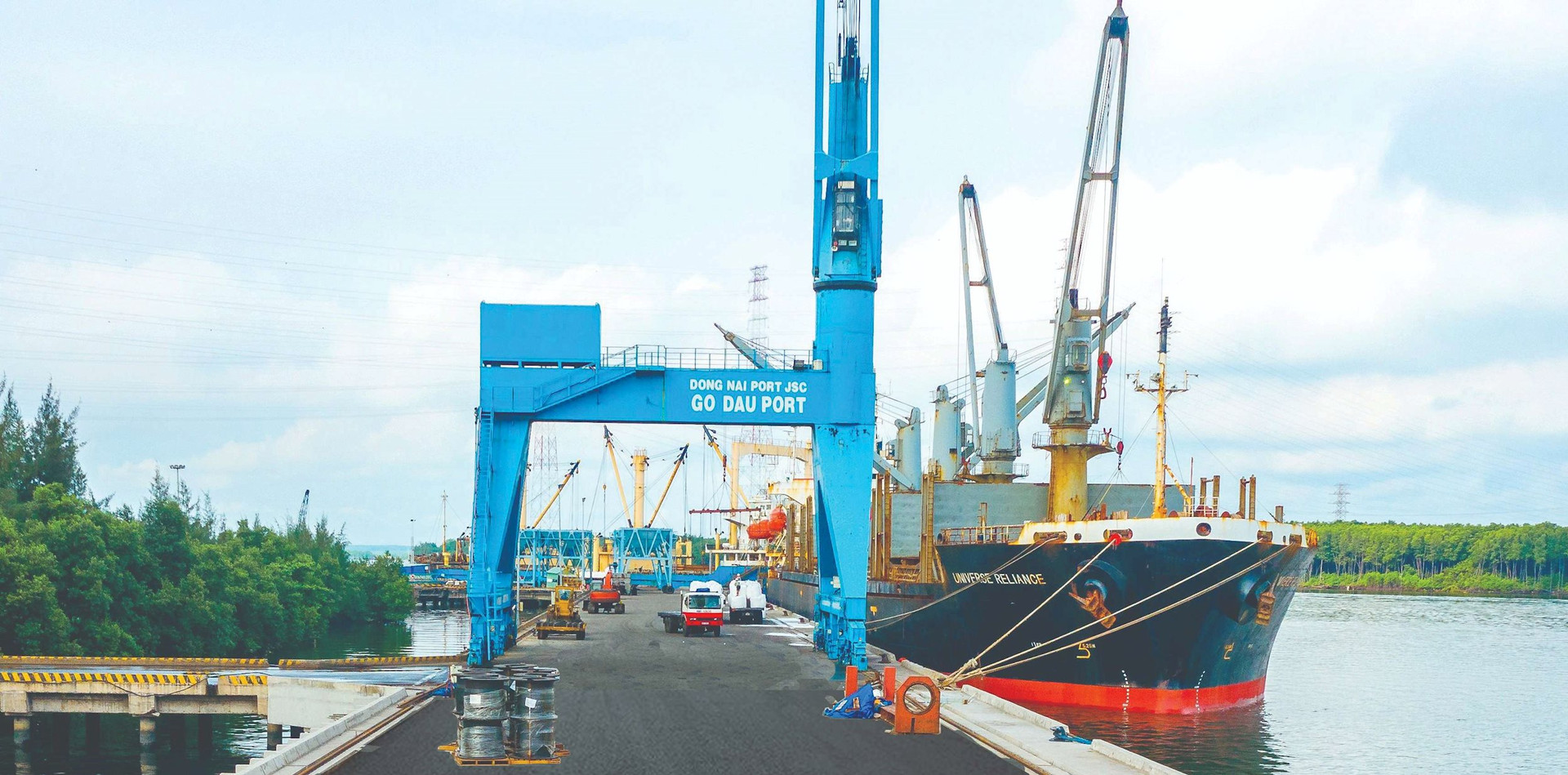Dong Nai Port connecting hub for regional and international logistics
English - Ngày đăng : 16:31, 02/10/2023
Dong Nai port consists of two international commercial port areas: Long Binh Tan Port and Go Dau Port. It serves as a crucial transportation hub in the Southern key economic quadrangle encompassing Ho Chi Minh City, Dong Nai, Binh Duong, and Ba Ria - Vung Tau provice.

In addition to its international shipping operations catering to the Intra-Asia routes (Go Dau Port branch and Long Binh Tan Port branch) for general cargo, with an annual throughput of over 7 million tons, Dong Nai Port – particularly the Long Binh Tan Port branch – is steadily asserting its vital role in connecting trade, serving the import and export of container goods to international markets in the Southeastern region.
According to the master plan for the development of Vietnam’s seaport system during the period 2021-2030 with a vision towards 2050 approved by the Prime Minister, it is expected that by 2025, the Cai Mep - Thi Vai Port area will have 13 container handling berths. The container throughput through the Cai Mep area is forecasted to reach 11.5 million TEUs by 2025, and the actual planned area for container storage is approximately 140 hectares with a capacity of around 8.5 million TEUs per year. This indicates that the container handling capacity of the Cai Mep area is insufficient for demand, necessitating inland-based storage systems such as Dong Nai Port, Binh Duong, and the port cluster of Ho Chi Minh City to consolidate and transfer goods.
With its convenient geographical location within a complex ecosystem of deep-sea and inland ports, Dong Nai Port plays a pivotal role in the consolidation and transfer of goods. It serves as a connecting hub for regional and international trade, logistics, and high-tech industries.

Thi Vai river and Dong Nai river systems enable goods to be transported by waterway from the deep-sea port cluster of Cai Mep in Ba Ria - Vung Tau and Ho Chi Minh City to the central transfer hub, Dong Nai Port (and vice versa). This facilitates the further connection of import and export processes through roadways across inland regions like Dong Nai, Binh Duong, Binh Phuoc, Tay Ninh, Lam Dong, Binh Thuan, Laos, Cambodia, and more. To facilitate this multi- modal transportation process, PDN has organized a fleet of over 40 barges with a maximum capacity of up to 256 TEUs per barge. This transportation volume grows annually by 10-12%, reaching over 600,000 TEUs by 2022. This plays a crucial role in optimizing the logistics supply chain, reducing costs, transit times, environmental carbon oxide emissions, and alleviating the strain on the overloaded road transportation system.
Building upon the achievements and efforts over the past 35 years of its establishment and development, Dong Nai Port Joint Stock Company is honored to be entrusted with the responsibility of hosting the annual Vietnam Seaports Conference in 2023.
In October 2022, the General Department of Customs approved the change of transit mode, transportation methods at PDN, allowing the application of transit cargo from Cambodia to be transported through the Cai Mep region for export shipments. Moreover, the transition to a new Customs management model in Dong Nai, with the establishment of the Dong Nai Port Customs Branch, has provided favorable conditions to exploit a wider range of commodities through the port.
Furthermore, the container scanning system has been operational at the port since November 2022, facilitating cargo inspection and customs clearance and enhancing the role of the port as a gateway for both the Go Dau Port and Long Binh Tan Port areas. Especially with the operation of the Bien Hoa - Vung Tau Expressway and the Belt Road 3 - Ho Chi Minh City connecting to Long Thanh Airport, PDN will become a central connecting hub for trade, logistics, and high-tech industries, optimizing the import and export transportation needs for businesses within the province and neighboring areas.
In line with its commitment to environmentally friendly business development, starting from October 2020, Dong Nai Port has installed a commercial solar power system on its roofs, covering 15,000 square meters with a total capacity of 1MWp, generating more than 150,000 KWh per month and contributing to the national power grid.
Parallel to these efforts, Dong Nai Port places a strong emphasis on technology and digital transformation in its operations and management. This is aimed at achieving the goal of complete automation of all port operations, enhancing productivity, efficiency, keeping up with modern logistics trends, and fostering sustainable development.
In 2022, PDN’s revenue reached 1,084 billion VND, a 15.34% increase compared to the planned target, and post-tax profit amounted to 234.193 billion VND, a 39% increase compared to the set target for 2022. In the first 8 months of 2023, PDN achieved an estimated total revenue of 733 billion VND. Over the next two years (2023-2025), PDN continues its expansion plan for berths and investments in handling equipment, infrastructure, and storage areas. Specific plans include:
+ In the Long Binh Tan Port area, additional specialized container handling cranes will be installed, extending the total crane length to 460 meters; Expanding the area to 25.6 hectares; Investing in an additional 10,000 square meters of handling and CFS warehouses, increasing the total warehouse area to 33,000 square meters.
+ In the Go Dau Port area, two port cranes with a total length of 415 meters will be constructed to accommodate ships with a load capacity of 30,000 DWT; Expanding the storage area by an additional 9 hectares.
